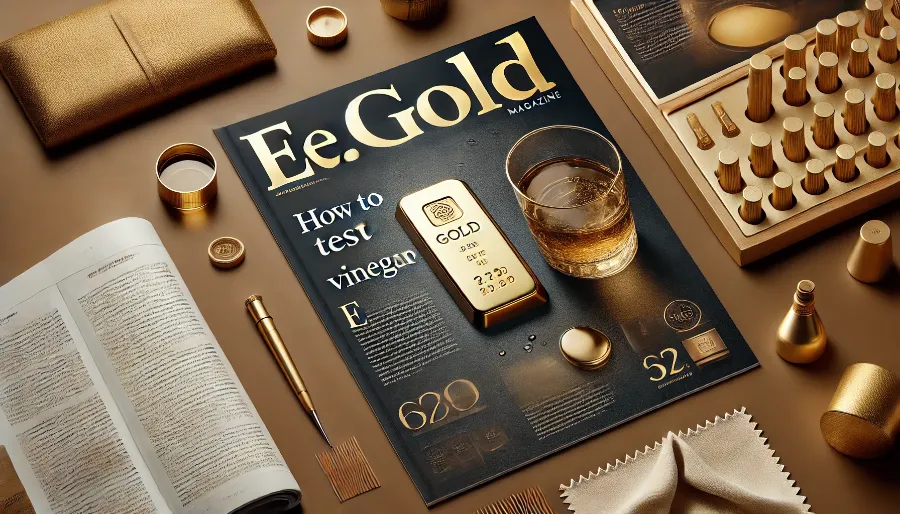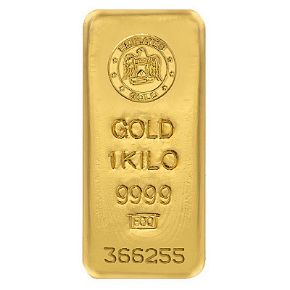
Gold has always been a prized possession, but verifying its authenticity can sometimes be tricky. One of the simplest and most accessible ways to test gold is by using vinegar, a common household item. This method is not only affordable but also highly effective in determining if your gold is real or fake. Let’s explore the step-by-step process, the science behind it, and other essential details about testing gold with vinegar.
Why Use Vinegar to Test Gold?
Vinegar is an acidic liquid, making it an excellent tool for testing gold. Real gold is non-reactive to most acids, including vinegar, because of its chemical properties. Fake gold or gold-plated items, on the other hand, may show reactions when exposed to vinegar, indicating their lack of purity.
What You Need for the Vinegar Gold Test
Before you begin, gather the following items:
- White vinegar (easily available in grocery stores)
- A small container or bowl
- A soft cloth or tissue
- The gold item you want to test
How Does the Vinegar Gold Test Work?
The test works by exposing the gold item to vinegar’s acidity. If the item is real gold, it will remain unaffected. If it’s fake, plated, or made from reactive metals, you might notice changes like discoloration or tarnishing.
Step-by-Step Guide to Testing Gold with Vinegar
- Clean the Gold Item: Start by cleaning your gold item with water and a soft cloth to remove any dirt or oil that might interfere with the test.
- Place the Item in a Container: Use a small bowl or container to hold the gold piece securely.
- Pour Vinegar Over the Item: Slowly pour enough white vinegar to submerge the gold piece completely.
- Wait for 5–10 Minutes: Allow the vinegar to interact with the item. Observe any changes in color or texture.
- Inspect the Gold: After 10 minutes, remove the item and gently wipe it with a soft cloth. Check for any discoloration or damage.
- Analyze the Results:
- If the gold remains shiny and unchanged, it is likely real.
- If the gold tarnishes, discolors, or shows signs of corrosion, it may be fake or gold-plated.
Who Can Use the Vinegar Gold Test?
This test is perfect for anyone who wants a quick and cost-effective way to verify the authenticity of their gold:
- Jewelry buyers looking to confirm the quality of their purchase
- Gold owners curious about their collection
- DIY enthusiasts seeking simple and practical solutions
When Should You Test Gold with Vinegar?
Use this method whenever you’re unsure about the authenticity of your gold. For example:
- Before buying second-hand gold jewelry
- After inheriting gold items with unknown purity
- When assessing old gold that may have degraded or been tampered with
Where Can You Apply the Vinegar Test?
The vinegar test is safe for most gold items, including:
- Gold coins
- Jewelry (chains, rings, bracelets)
- Small gold bars
Limitations of the Vinegar Test
While effective for distinguishing fake gold, this test has its limits:
- It cannot determine gold purity (e.g., 14K, 18K, or 24K).
- It may not work well on heavily coated gold-plated items, as the coating may protect the base metal from vinegar.
Alternatives to Testing Gold with Vinegar
If you need a more precise gold test, consider these options:
- Magnet test: Gold is non-magnetic, so a strong magnet can help verify authenticity.
- Professional testing: Jewelers can conduct acid tests or electronic tests for accurate results.
- Gold testing kits: These kits contain acids and tools to assess gold purity.
Is the Vinegar Gold Test Reliable?
The vinegar test is reliable for identifying fake gold but should not replace professional evaluations. It’s a quick DIY method that offers valuable insights but lacks the precision of advanced testing techniques.
What Does Gold’s Reaction to Vinegar Reveal?
Gold’s non-reactivity to vinegar is due to its chemical stability and resistance to oxidation. In contrast, metals like brass, copper, or nickel react visibly, making them easy to identify as fake.
FAQs About Testing Gold with Vinegar
Will vinegar damage real gold?
No, vinegar will not harm real gold due to its chemical stability.Can I test gold jewelry with gemstones using vinegar?
Avoid submerging items with gemstones, as vinegar may damage certain stones.What if my gold item reacts slightly to vinegar?
It might be gold-plated or a mix of gold and reactive metals.How accurate is the vinegar test?
It is effective for detecting fake gold but does not measure purity.Can white vinegar be replaced with another type?
White vinegar is preferred for its clarity and consistent acidity.Does the test work on all gold karats?
Yes, but it does not distinguish between karats.Should I use hot or cold vinegar?
Room-temperature vinegar is sufficient.What if my gold has a protective coating?
Remove any coatings before testing to get accurate results.Can I use this test on antique gold?
Yes, but handle antique pieces carefully to avoid damage.How long should I leave the gold in vinegar?
Five to ten minutes is typically enough for visible results.
Testing Gold Safely at Home
Testing gold with vinegar is an easy, cost-effective, and safe method to identify fake items. While it’s not a substitute for professional testing, it’s an excellent first step in ensuring your gold’s authenticity. Whether you’re verifying a recent purchase or exploring heirlooms, this simple test provides valuable peace of mind.
How to Handle Results from the Vinegar Gold Test
After conducting the vinegar test, your next steps depend on the results:
If the Gold Passed the Test
Celebrate the authenticity of your gold! You can confidently keep it as part of your collection, wear it, or even consider selling it at a good price if needed. To further validate its value, you might want to have it professionally appraised.If the Gold Failed the Test
If your item shows signs of discoloration or tarnish, it may be fake or gold-plated. Here’s what you can do:- Take it to a jeweler for further verification.
- Use additional testing methods, such as acid tests or a gold purity kit, for a second opinion.
- Reconsider the source of the item, especially if you purchased it recently, and contact the seller for clarification or a refund if necessary.
How to Avoid Buying Fake Gold
To avoid the hassle of testing and disappointment of fake gold, follow these tips:
- Purchase from reputable dealers: Always buy gold from well-known jewelers, certified dealers, or authorized retailers.
- Request certifications: Look for hallmarking, purity certificates, or other proof of authenticity.
- Check reviews and references: Research the seller thoroughly, especially for online purchases.
- Avoid deals that seem too good to be true: Unrealistically low prices often indicate fake or low-quality gold.
Can Vinegar Be Used Repeatedly for Testing?
Yes, you can reuse the same vinegar for multiple tests, but be aware that prolonged exposure to metals may slightly alter its acidity over time. For best results, use fresh vinegar for each test, especially when testing several items.
The Science Behind Gold’s Non-Reactivity
Gold’s remarkable resistance to corrosion and chemical reactions is a result of its electron configuration. Unlike many other metals, gold doesn’t easily combine with oxygen or other elements, making it impervious to most acids, including vinegar. This property has made gold a symbol of wealth and durability for centuries.
Why Is It Important to Test Gold?
Testing gold isn’t just about satisfying curiosity; it’s a crucial step in:
- Protecting your investment: Ensuring the gold you own or plan to buy is worth its value.
- Avoiding scams: Identifying fake or gold-plated items that may have deceived others.
- Maintaining trust: Whether for personal use or resale, knowing the authenticity of your gold builds confidence in its true worth.
Common Myths About Testing Gold
- Gold always reacts to acids: Pure gold doesn’t react, but impurities in lower-karat gold might.
- The vinegar test damages gold: Real gold remains unaffected, so this test is safe.
- All gold-plated items fail the test: Some high-quality plating may withstand brief exposure, requiring other methods for verification.
Preserving the Integrity of Your Gold
After testing, take proper care of your gold to maintain its beauty and value:
- Store in a dry, secure place: Use a jewelry box or safe to protect against moisture and theft.
- Clean gently: Use a soft cloth and mild soap to clean gold items periodically.
- Avoid harsh chemicals: Keep gold away from chlorine, bleach, and other strong substances that might damage it over time.
Why Testing Gold Matters in 2025
In today’s world of rising gold prices and high demand, counterfeit items are increasingly common. Testing gold ensures that your investment is genuine and provides peace of mind whether you’re buying, selling, or simply enjoying your collection. With simple methods like the vinegar test, verifying authenticity has never been easier or more accessible.
Explore Gold Testing Innovations
The vinegar test is a classic DIY method, but modern advancements have introduced new ways to test gold:
- X-ray fluorescence (XRF): Provides a non-destructive analysis of gold composition.
- Ultrasound testing: Detects density and internal structure to confirm authenticity.
- Laser engraving verification: Helps trace gold’s origin and quality.
These technologies, while more sophisticated than vinegar, underscore the importance of testing in the gold industry.
A Final Word on Testing Gold with Vinegar
Testing gold with vinegar is a straightforward, effective method for distinguishing real gold from fake. It’s a valuable tool for jewelry owners, gold buyers, and anyone curious about their gold’s authenticity. By following the simple steps outlined in this guide, you can confidently evaluate your gold items and make informed decisions about their value.
Remember, while the vinegar test is a reliable starting point, it’s always wise to seek professional advice or use advanced testing methods for complete peace of mind. Let the timeless allure of genuine gold enrich your life, knowing that your treasures are authentic and enduring.
NOTE
This Content is the copyrighted content of EE.GOLD. All rights are reserved. You are welcome to share or use our content only by including direct links to our website. Any other form of reproduction, distribution, or use without proper attribution is strictly prohibited.
This Content is intended solely for educational purposes. The information provided does not constitute financial or investment advice.
Please note that Digital Storage Receipt, Secure Storage Solutions, and Physical Gold Sales are the only services offered by EE.GOLD.
We strictly adhere to government regulations and are firmly against all illegal financial or investment activities globally.
For further inquiries, feel free to contact us through our official channels.










.png)

